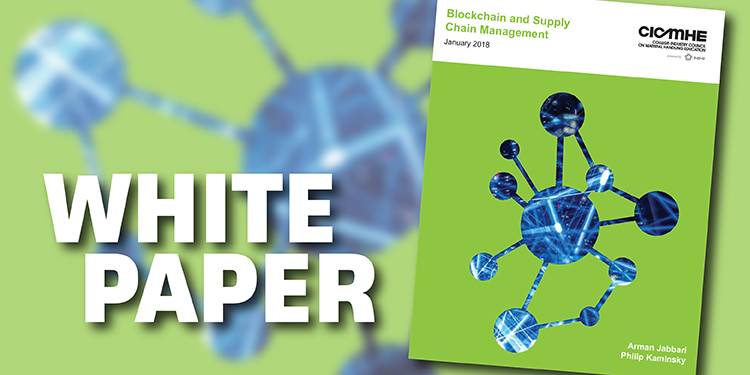Why Blockchain’s Potential To Transform Supply Chain Management Needs More Research

The popular press has increasingly touted the expectation that Blockchain will make a substantial impact upon supply chain management. Blockchain, or a decentralized, distributed database that maintains a continuously growing list of secure data records, significantly decreases the risk of fraud or external hacker attacks. This makes it possible for a fully secure exchange of information—and trade—with untrusted or unverified parties, while cutting transaction times; minimizing supply chain paperwork; expediting payment processes; boosting transparency, traceability and visibility; and reducing overall costs. Hence the interest in this NextGen technology for supply chain applications.
But, as of this moment, there’s more hype than reality surrounding Blockchain and its potential to transform supply chain management. That’s why a pair of researchers from the University of California, Berkeley’s Department of Industrial Engineering and Operations Research recently published a white paper on the topic. The study, conducted by Arman Jabbari and Philip Kaminsky, was funded by a grant from the College Industry Council on Material Handling Education (CICMHE) and is published as one of the resources made available by MHI’s Solutions Community.
Jabbari and Kaminsky’s conclusion? That while Blockchain does indeed have some potential to make short term impacts on supply chain, more research is required around four key categories of issues before proposed, Blockchain-enabled solutions can come to fruition. These include:
- How to link physical products to a digital ledger. Currently available technologies, the pair note, include barcodes, sensors, RFID tags and 3D stamps. All are easily duplicatable and removable. This means an RFID tag or barcode can be copied and placed on fake products, or a sensor can be relocated to a refrigerated container uncompromised by a shift in temperature. A new solution is required to circumvent possible fraudulent activity.
- How to link Blockchain-enabled networks to external markets. This pertains to product purity, explain Jabbari and Kaminsky. They note that in the case of olive oil, for example, external markets enable producers to sell both pure oil and blends within the Blockchain network and outside of it. Fraud potential exists because the non-Blockchain based market selling the same brands is not subject to the same traceability system.
- How to enhance Blockchain to account for complicated supply chain structures. Rarely in supply chains are transactions one-to-one. Instead, they often involve multiple interrelated processes, such as assembly, disassembly, transformation, waste, break-down, defect identification and so on. A Blockchain network is therefore hampered by its ability to distinguish divergent events, say the researchers, meaning more testing and study of potential solutions are required to overcome such limitations before it can truly impact supply chains.
- How to reserve adequate storage space for all the information required by supply chains. The pair note that in supply chains, Blockchain will need to store more data than simply A-to-B transactions. Instead, information about product details, manufacturing specifications, machines, workers, sources, suppliers and more will need to be included as well—requiring significantly larger data storage repositories than current Blockchain solutions utilize—explain Jabbari and Kaminsky.
Want to learn more? The full white paper is available for download here, free of charge, via MHI’s Solutions Community.



